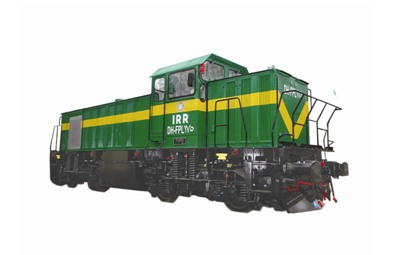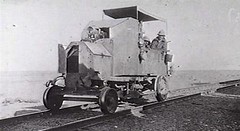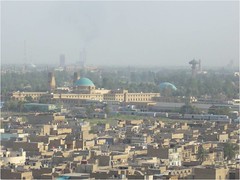The railway station at Al Qa’im near the Syrian border has been used as a US military base, but was handed back to Iraq in October.
By Lance Cpl. Joshua Murray
Regimental Combat Team 5

CAMP AL QA’IM, Iraq – The Warlords of the Jump Platoon, Task Force 2nd Battalion, 2nd Marine Regiment, Regimental Combat Team 5 arrived, Oct. 13, 2008, to a barren camp.
The once bustling base, which Marines of the battalion called home for the first five months of their deployment, housed nothing more than a small guard force, stationary train cars rusting on the rails and empty buildings, which is just how the Marines wanted it.
Major Gen. Martin Post, deputy commanding general, Multi-National Force – West, visited the camp, previously known as Al Qa’im Railway Station 22, to return the base to Iraqi officials following more than five years of U.S. military presence.
“It’s good for me to be back at Al Qa’im,” said Post. “Not only are we turning over here, later this year we will also be turning [over] the Haditha Dam facility. We will also be turning over Camp Fallujah to the Iraqis.”
The railroad here was shut down in early 2003 and was used as a camp for coalition forces within the Al Qa’im region. Despite being a necessary base for coalition forces, shutting down the railway here delayed the use of a vital means of transportation for local citizens and slowed the shipment of minerals from nearby factories.
“The train station will help to transport materials from a phosphate plant, cement factory and transport passengers,” said Insaief Jaseem Mohammed, the Iraqi Railroad chief of region at the renamed Al Qa’im Railway Station 22. “This will help the factories and the passengers. The cost to transport passengers will go down.”
The factories, crippled temporarily by the loss of their reliable and most cost-effective means of shipment, have waited patiently for the return of their railway.
“The functioning of the railroad is really being anticipated in this area,” said Paul Schemel, liaison officer in Al Qa’im with the state department’s embedded Provisional Reconstruction Team. “The phosphate factory employs 4,000 people, and the cement factory employs 2,000 people. They both rely on the railroad to get their supplies and material out to the rest of the country and to get raw materials in.”
The turn over of the base signifies the accomplishment of one of 2nd Bn., 2nd Marines’ key goals during their deployment: ensuring the self reliance of the people in the Al Qa’im region. Work will continue regarding the improvement of the railway with the hopes of increasing resource trading and industrial prosperity in the region.
“Bringing this railroad back onto line is going to be a key factor in the economic development of this region,” Schemel said. “Ultimately it could be a key link between [Al Qa’im], Syria and the Mediterranean, which is something we hope for long term.”
Source: DVIDS News, 2008-10-20




